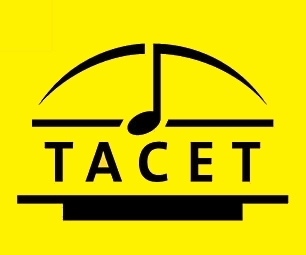The works shimmer in magisterial harmony and convey atmosphere to spare
"Erika Haase (b. 1935) boasts a strong artistic pedagogy, having studied with Edward Steuermann and Conrad Hansen. A teacher at State School, Hanover Music and Arts, she is to piano instruction what Uta Hagen was to acting. Her powerful technique can be savored in these studies Liszt developed especially for his own prowess, as well as serving as homage to Nicolo Paganini, the greatest violinist of his time. The Six Paganini Etudes (1840; rev. 1851) rarely receive integral recordings, and it is a pleasure to hear Haase′s Steinway D (rec. 2006) in blazing, even mesmerizing Technicolor sound, courtesy of engineer Andreas Spreer.
Haase′s octaves are a lesson unto themselves; witness her E-flat Major Etude based on Paganini′s 17th Caprice. The first Etude in G Minor exploited a continuous trill that proves quite ferocious. Dazzling repeated notes constitute La Campanella in G Sharp Minor, with references to the triangle part in Paganini′s B Minor Violin Concerto. While I personally rank Nojima′s version as stupendous, Haase makes my skin quake just as well. The E Major imitates the violin′s arpeggio and bariolage techniques, which leads to some torturous fingering for a pianist, her two hands competing for room in a confined space. The E Major No. 5 "La Chasse" imitates a hunting horn and flute motif, with huge spans among the notes. Brilliant staccato work and slick runs from Haase. The A Minor is the most familiar, having enjoyed treatment from Brahms, Rachmaninov, and Lutoslawski. A series of bravura variations, the piece tests metric precision, sustaining pedal, and digital dexterity, as well as degrees of dynamic subtlety. Haase manages a terrific tension in this etude, delivered in one fell swoop.
The three Concert Etudes (1845-1849) contain one rarity, the opening Il Lamento in A-flat Major, a tonepoem for keyboard that opens with an improvisation and proceeds to a Cantabile of grand rhetorical and sensual scope, really a sparkling, plastic nocturne from the religious and poetic harmonies of Liszt. The chromatic scales and parallel sixths of La Leggierezza - the F Minor study in touch and thematic transformation - proves mother′s milk to Haase′s florid technique, which can charm as well as dazzle. Un Sospiro (D-flat Major), with its crossed hands and liquidly erotic effects, makes a strong impression, especially in the virtuoso cadenzas.
Finally, two concert etudes that Liszt composed for an 1863 book of pedagogical exercises: Waldesrauschen and Gnomenreigen. The former has swirling patterns and makes the demands of a contrapuntal perpetuum mobile. Gnomenreigen is Liszt′s answer to Mendelssohn fairylands. Played with declamatory and bold panache by Haase, the works shimmer in magisterial harmony and convey atmosphere to spare. Note that this all-Liszt recital constitutes the third of Haase′s editions devoted to etudes, the former volumes dedicated to Debussy, Stravinsky, Ligeti, Messaien, Bartok, and Scriabin."
Gary Lemco
<< zurück
"Erika Haase (b. 1935) boasts a strong artistic pedagogy, having studied with Edward Steuermann and Conrad Hansen. A teacher at State School, Hanover Music and Arts, she is to piano instruction what Uta Hagen was to acting. Her powerful technique can be savored in these studies Liszt developed especially for his own prowess, as well as serving as homage to Nicolo Paganini, the greatest violinist of his time. The Six Paganini Etudes (1840; rev. 1851) rarely receive integral recordings, and it is a pleasure to hear Haase′s Steinway D (rec. 2006) in blazing, even mesmerizing Technicolor sound, courtesy of engineer Andreas Spreer.
Haase′s octaves are a lesson unto themselves; witness her E-flat Major Etude based on Paganini′s 17th Caprice. The first Etude in G Minor exploited a continuous trill that proves quite ferocious. Dazzling repeated notes constitute La Campanella in G Sharp Minor, with references to the triangle part in Paganini′s B Minor Violin Concerto. While I personally rank Nojima′s version as stupendous, Haase makes my skin quake just as well. The E Major imitates the violin′s arpeggio and bariolage techniques, which leads to some torturous fingering for a pianist, her two hands competing for room in a confined space. The E Major No. 5 "La Chasse" imitates a hunting horn and flute motif, with huge spans among the notes. Brilliant staccato work and slick runs from Haase. The A Minor is the most familiar, having enjoyed treatment from Brahms, Rachmaninov, and Lutoslawski. A series of bravura variations, the piece tests metric precision, sustaining pedal, and digital dexterity, as well as degrees of dynamic subtlety. Haase manages a terrific tension in this etude, delivered in one fell swoop.
The three Concert Etudes (1845-1849) contain one rarity, the opening Il Lamento in A-flat Major, a tonepoem for keyboard that opens with an improvisation and proceeds to a Cantabile of grand rhetorical and sensual scope, really a sparkling, plastic nocturne from the religious and poetic harmonies of Liszt. The chromatic scales and parallel sixths of La Leggierezza - the F Minor study in touch and thematic transformation - proves mother′s milk to Haase′s florid technique, which can charm as well as dazzle. Un Sospiro (D-flat Major), with its crossed hands and liquidly erotic effects, makes a strong impression, especially in the virtuoso cadenzas.
Finally, two concert etudes that Liszt composed for an 1863 book of pedagogical exercises: Waldesrauschen and Gnomenreigen. The former has swirling patterns and makes the demands of a contrapuntal perpetuum mobile. Gnomenreigen is Liszt′s answer to Mendelssohn fairylands. Played with declamatory and bold panache by Haase, the works shimmer in magisterial harmony and convey atmosphere to spare. Note that this all-Liszt recital constitutes the third of Haase′s editions devoted to etudes, the former volumes dedicated to Debussy, Stravinsky, Ligeti, Messaien, Bartok, and Scriabin."
Gary Lemco
<< zurück
